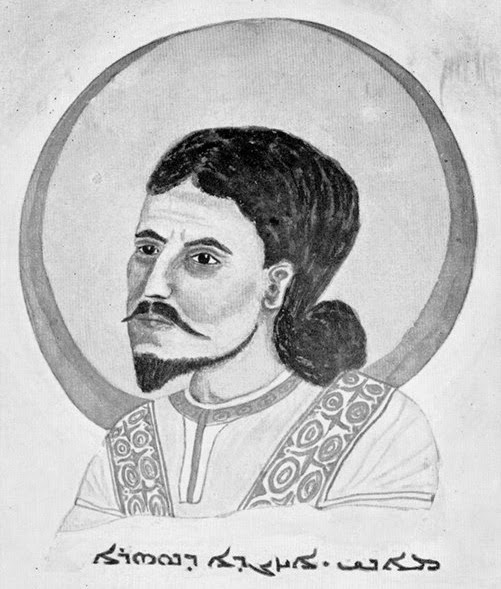Ancient seal sheds light on Persian prophet
AS THE LAST LINKS TO ANCIENT #MANICHAEISM; THE #YEZIDI AND#KURDS
FACE GENOCIDE THE CRYSTAL SEAL OF #MANI THE #GNOSTIC APPEARS.

Crystal seal of Mani [Credit: Northern Arizona University]
A SERPENT SWALLOWING ITS TAIL IS WHERE THE INSCRIPTION IS
IN THE CENTRE THE HOLY TRINITY WITH A FAMILAR LOOKING RUNE
The rock crystal is flat on one side and rounded on the other, with a sunken carving on one half creating a positive image on the opposite side. Mani is flanked by two people, possibly disciples, and an inscription reading 'Mani, apostle of Jesus Christ' forms the perimeter. "The drills of the time used wound strings to spin a point to create an even carving," Gulacsi said.
Gulacsi thinks Mani wore his crystal seal as a pendant, a practice of that time. The prophet's only known surviving artifact is about the size of a quarter; the thin quartz seal was likely once encased in gold to facilitate its use.
When a personal artifact of a religious leader is discovered nearly 1,700 years after its use, the object provides invaluable historical insights. Zsuzsanna Gulacsi, professor of Comparative Cultural Studies, has been studying an ancient crystal seal used by prophet Mani, to provide new interpretations and prepare the seal for further research
Mani, a Persian born in 216, established Manichaeism, a religion drawing from the era's dominant religions, including Zoroastrianism and Christianity. Mani stood out among religious leaders of the time, Gulacsi said, because he wrote his own doctrine, compared to Jesus, Mohammad and the historical Buddha who were not known to read or write.
The engraved crystal seal was used to authenticate Mani's writings and correspondence. According to Gulacsi, Mani believed other religious leaders had their teachings distorted because they could not write themselves. "Their disciples did not have the capacity of a prophet, whose clarity of religious insight was believed to surpass that of ordinary human beings," Gulacsi said.

The Prophet Mani [Credit: WikiCommons]
In 274, Mani died in prison after being persecuted for his religious teachings. His belongings were likely passed to his successor, but the fate of the crystal seal is not known until it turned up in Paris in 1896, where it was purchased and housed in the gemstone section of the National Library of France. Despite its historical significance, Mani's engraved crystal seal had escaped attention until recently. Gulacsi has researched and written about the seal, including an article just published in the Bulletin of the Asia Institute.
Source: Northern Arizona University [October 30, 2014]
Read more at: http://archaeologynewsnetwork.blogspot.ca/2014/10/ancient-seal-sheds-light-on-persian.html?utm_source=feedburner&utm_medium=feed&utm_campaign=Feed:+TheArchaeologyNewsNetwork+(The+Archaeology+News+Network)#.VFUswjTF_TpFollow us: @ArchaeoNewsNet on Twitter | groups/thearchaeologynewsnetwork/ on Facebook






